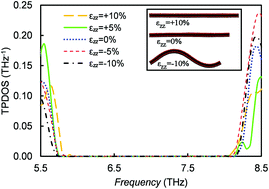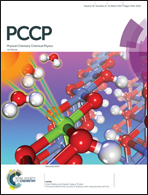Computational study of phononic resonators and waveguides in monolayer transition metal dichalcogenides
Abstract
Using molecular dynamics and semi-empirical potentials, large scale transition metal dichalcogenides monolayers (TMDM) were examined. The focus of the study was the modification of the phonon spectrum of TMDMs by engineering substitutional defects to produce phononic resonators and waveguides on the atomic scale. The resonant frequencies of the aforementioned structures can be tuned by applying tensile or compressive stresses. The TMDMs exhibited wide phononic band gaps (PBG) in their phonon spectrum because they consist of atoms with quite different atomic masses. The PBG from the present semi-empirical calculations were found to be in reasonable agreement with previous ab initio calculations. The problem is very broad since many varieties of TMDMs (with or without defects) can be made. The present study focused on MX2 composites with M being Mo or W and X being S or Se. The most interesting behavior was found in WS2 with substitutional defects of either S ↔ Se or W ↔ Mo.



 Please wait while we load your content...
Please wait while we load your content...